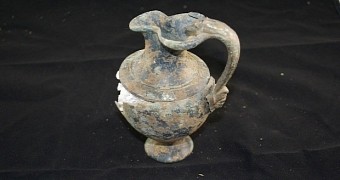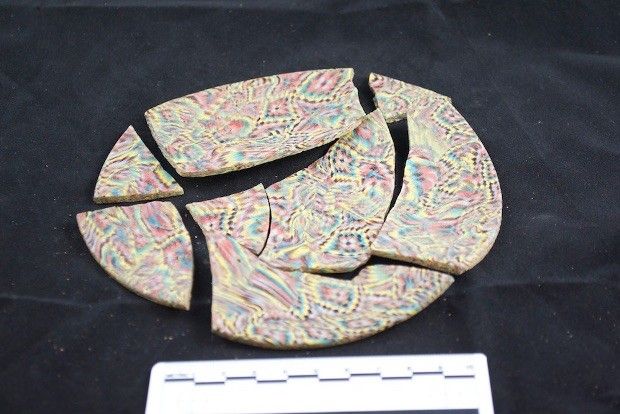In a recent paper, archaeologists describe a Roman-era grave discovered towards the end of last year in a field in the village of Kelshall in North East Hertfordshire, UK.
The grave was established around 200 AD close to another Roman structure that archaeologists suspect was a shrine or temple of sorts, in turn built right next to a villa.
While excavating the burying place, researchers came across a bounty of artifacts, coins, glassware, bronze jugs, and even hobnails from an ancient pair of shoes.
Oddly enough, the grave was found by a regular Joe
Like many other centuries-old archaeological treasure troves, this Roman-era grave in the small village of Kelshall in the UK was found not by a team of researchers but by a regular Joe.
According to Live Science, the man, named Phil Kirk, was just playing around with a metal detector when he chanced to find a bronze jug. He kept exploring, and soon enough, he found two other such vessels and one other dish that once served to pour wine.
Phil Kirk discovered the artifacts in October 2014. He contacted researchers and told them all about his find. Come November, the site was being excavated and other relics were popping out of the ground.
Of the coins discovered inside the grave, one was found to have been forged in the 170s AD under the rule of Emperor Marcus Aurelius. The discovery of this coin allowed archaeologists to estimate the date of the burying place.
The grave was likely built for a wealthy individual
Judging by the cohort of artifacts found inside it, researchers suspect that the grave, measuring roughly 6.2 feet by 5.2 feet (about 1.9 meters by 1.6 meters) was set up to accommodate for the remains of an especially wealthy individual.
“Whoever had this burial was quite clearly extremely wealthy,” archaeologist Fitzpatrick-Matthews said in a statement. “They've been buried with the second-century equivalent of bling,” he added.
Inside the grave was also a hexagonal bottle which contained cremated human bones. All things considered, odds are that the bones belong to the person for whom the burying place was established.
Scientists now want to study the bones and try to establish whether the person laid to rest in this location was a man or a woman, and whether they were young or fairly old when they passed away.

 14 DAY TRIAL //
14 DAY TRIAL // 

